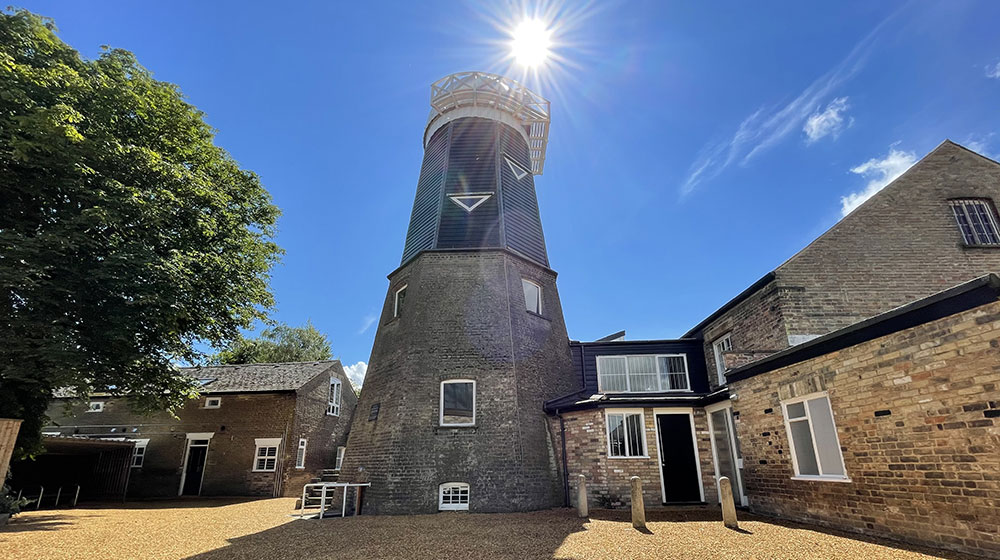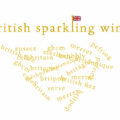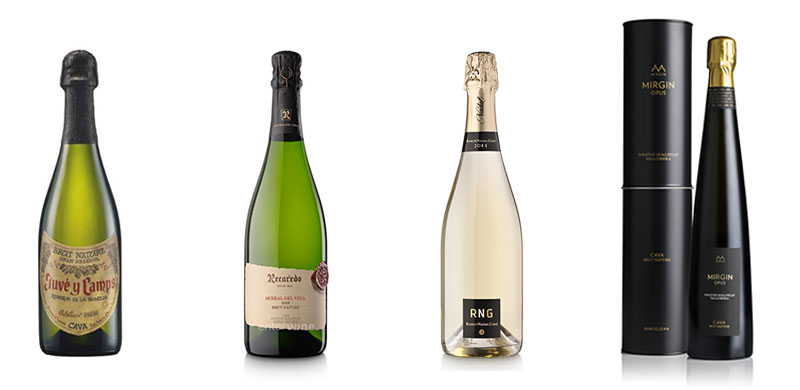Sure, still whites made from Chardonnay in the UK have been around for a while, but now it’s a variety that’s definitely found its voice.
While grown in the country for some time, my first encounter with English Chardonnay was the 2013 vintage of the Gusbourne Estate Chardonnay ‘Guinevere’.
It was admittedly lime juice on toast, but it was exciting. While trying to be Premier Cru Chablis, it felt new. The searingly high acidity was tempered by a year in oak barrels and another three in bottle, but didn’t suit the wine. It was angular and energetic, yet awkwardly overbearing.
That was five years ago, and the vast number of English Chardonnay I’ve tasted since has leaped forwards in not just quality, but importantly identity. The challenge for English Chardonnay is to champion that identity.
Chardonnay is a tough one because it’s a vastly over-crowded space in terms of the variety. Most countries that make wine grow it and most will tell you theirs has an identity, but the truth is that not all do.
There are huge swathes of inexpensive yet uninspiring Chardonnay grown the world over that are simple, bright, and easy going. Plus, there are more copycat premium examples taking a leaf from the books of the French or the Americans than I can mention. The Americans have forged a separate stylistic path, proud of their full on, buttery Chardonnay with coconut and spice, leaving Burgundy to their precise, linear classics.
And, no, I probably haven’t tried that one exception that you’d like to point out to me which is “sure to change my mind” but tell me where to find it and I’ll buy a bottle.
It’s inevitable that there are going to be specific producers doing something intriguing such as eschewing sulphur, or tractors, or rejecting norms. Maybe they’re making expressive skin contact, unfiltered, under the radar natty juice bombs, but one producer is not representative of a regional style, which is why what’s happening in England is so important to pay attention to.
A. T. C.
The three components of modern English Chardonnay are: acidity, texture, and character. The best bottles have grace and elegance, a distinct floral character, tropical fruit that’s flouncy and playful, wildflower meadow, and cut grass. All just neatly underpinned by precise citrus and soft oak. Citric acidity brings freshness and charm, along with subtle use of old oak coaxing out Chardonnays creamy texture.
The ‘English Identity’ is quietly growing in confidence, positioning Chardonnay as something crucial rather than a counterpoint to Bacchus. The Sauvignon-esque quality of Bacchus often has the loudest claim to broad consumer appeal. It’s not however the saviour of English still wines and I’ve tasted too many average, inconsistent Bacchus. There’s a green, herby character that all too regularly splits the crowd.
Producers in the U.K have learnt the best way to showcase Chardonnay’s cool climate acidity is not by tempering and trying to tame it, but by bringing texture up to its level. There’s a palette of techniques being used: picking late, old oak barrels, skin contact, or lees ageing. A combination of one or two of these adds definition and character without masking the elegant freshness that sets the style apart.
Take for example the Langham Estate 2018 Chardonnay. Oxidative pressing followed by gentle racking means the wine is stable enough for a wild ferment in barrel with no SO2. Langham don’t describe themselves as natural, although on paper their methods might suggest as such. The resulting wine is pure, precise, ripe, textured and brilliantly well balanced.
You can’t make great wine from bad fruit
I like the term ‘craft’ for well-regarded, small-batch handcrafters, or boutique low-interventionists. They’re seemingly gravitating towards the same part of the U.K. for their grapes as are bigger wineries looking for quality as well as quantity, in order to secure their supermarket listings.
Large wineries such as Lyme Bay in Devon, or craft wineries like Gutter & Stars, tucked in the basement of a windmill in Cambridge, and more obviously the well-regarded Danbury Ridge in Essex, are all using grapes from Essex. Specifically, it’s the Crouch Valley area to the southeast of the county and along the river Crouch.
Crouch Valley has been receiving a lot of attention, so I’m not going to delve too deeply into the climate and soils of Essex, except to say that it’s the place to go for the best Chardonnay in the U.K. at the moment.
Danbury Ridge have been quick to secure their place in the eyes of the critics as being in the top bracket of English wineries. Based in the Essex village of Danbury, their consultant Master of Wine, John Atkinson spent a lot of time looking at the geology of their Crouch Valley estate vineyards and couldn’t be happier.
English Chardonnay isn’t an easy thing to get right and I’ve certainly tasted some lacklustre wines too. There’s a need for a bit of wrangling in the winery and an understanding of how to properly balance acidity. Again, not to hide it, but to prop it up with this crucial ingredient of texture takes some skill. Perhaps it’s telling that Liam from Danbury Ridge had spent time at Lyme Bay, working with Essex fruit before moving to a new winery in the heart of Chardonnay county.
Plenty of others are not buying in their grapes. Estate-grown fruit on certain sites, such as Chapel Down’s Kits Coty, or Gusbourne’s latest Clone 809 release, both come from selected plots, sites identified for expressive still wines. I’m sure these parcels or barrels were saved from bottle fermented blends as they had a good deal more potential.
This awakening is ongoing
Today’s English Chardonnays are something altogether different from the wines I tasted five years ago. Stylistically something has clicked, whether that be a new breed of winemakers, changing climatic conditions or a deeper understanding of how the grape grows, so much has changed for the better.
There’s a comfort in freshness, a restraint in oak and an upfront character that’s consistent across a spectrum of producers. There’s confidence in numbers too. It’s not just one winery making Chardonnay with identity, it’s a whole community of growers and makers coming together, pushing each other to do better. With a style that has been given space to mature, coming of age beyond a quirky afterthought and turning into something altogether more assured.
You’re reading a free article on Hudin.com.
Please consider subscribing to support independent journalism and get access to regional wine reports as well as insider information on the wine world.
Wines I Tasted (Recently) For This Article
Danbury Ridge, Estate Chardonnay, 2018
The least fitting of what I’d consider English in style. It’s very Burgundian, ripe, rounded, creamy and austere. Grown up and very considered, accomplished winemaking. Made from their Estate Chardonnay grapes in Essex. £35.
Chapel Down, ‘Kits Coty’ Chardonnay, 2018
Really attractive, enticing aromatic character of preserved lemons and almonds. The oak is so well integrated, effortless charm and precision. Bright, snappy acidity underpinning a layered, textured finish, delightfully well put together.
Langham Estate Chardonnay, 2018
Relatively naturally made, low SO2, spontaneous barrel fermentation of grapes grown on the Langham Estate in Dorset. Clean, precise and generous with a flinty, piercing core of orange peel and peach. Light footed, with that classic acidity keeping the wine alive. £18
Gutter & Stars, ‘Daylight Upon Magic’, Chardonnay, 2020
The broad reason for this article, the most characterful example of English Chardonnay I’ve tasted. Everything mentioned above is in abundance, floral, peachy, a smidge of oak, a wisp of toast, sappy acidity. Just brilliant. Made in a windmill in Cambridge from Essex fruit. £27
Lyme Bay, Chardonnay, 2020
Perhaps this needs a couple more months in bottle to settle, the oak came in from the side rather than fully integrated, but adding nice texture. A zippy, apple and kiwi character. Another playful wine, bright and fresh with a herby, pithy finish. Made in Devon with fruit from Essex. £24
Freedom of the Press, Chardonnay, 2020
The most aromatic of my recent tastings, bright, lemon freshness with a delicate herby, floral character. The winemaking uses old oak, lees and then though malolactic to add a lovely soft texture. Really impressive. Made in an “urban winery on a hill in the Cotswolds”, using Essex grown fruit. £25



Awesome article. So many positives in the Crouch Valley viti/vini cultural world. Lots more fun to come with Chardie, Pinot Noir and beyond. Exciting times for English and dare I say it.. Welsh wines. Crazy times!
Crazy times! 




